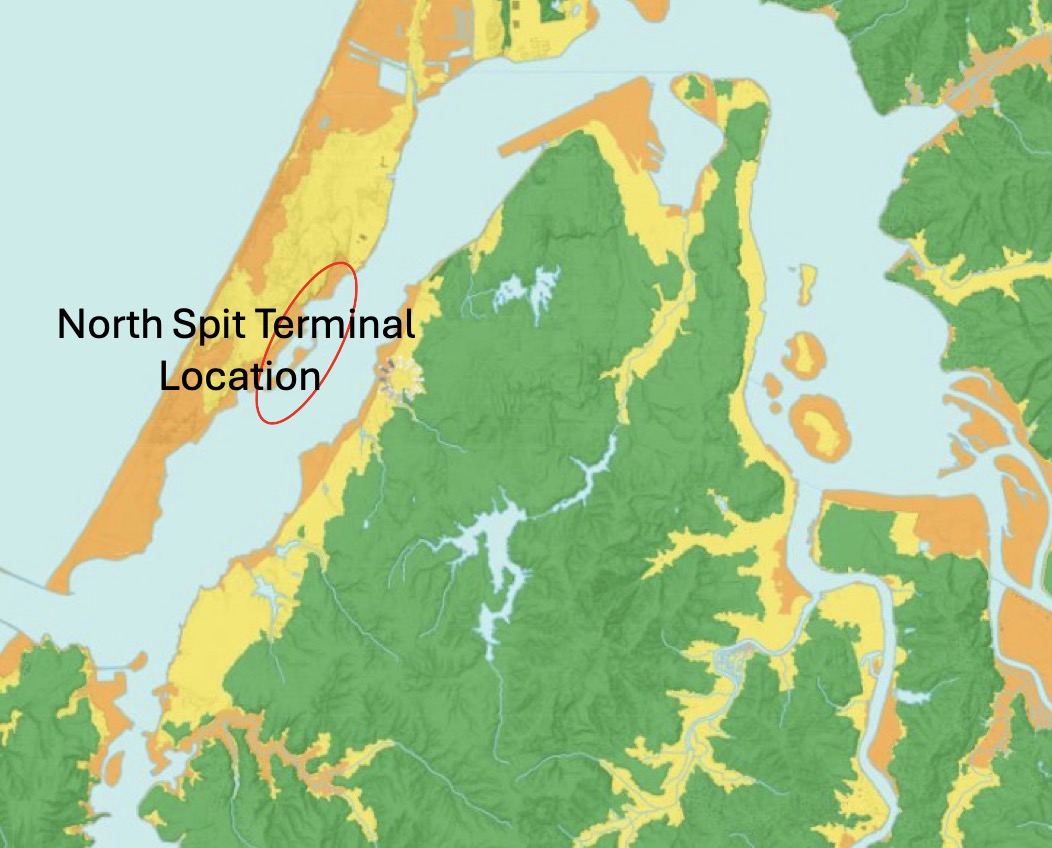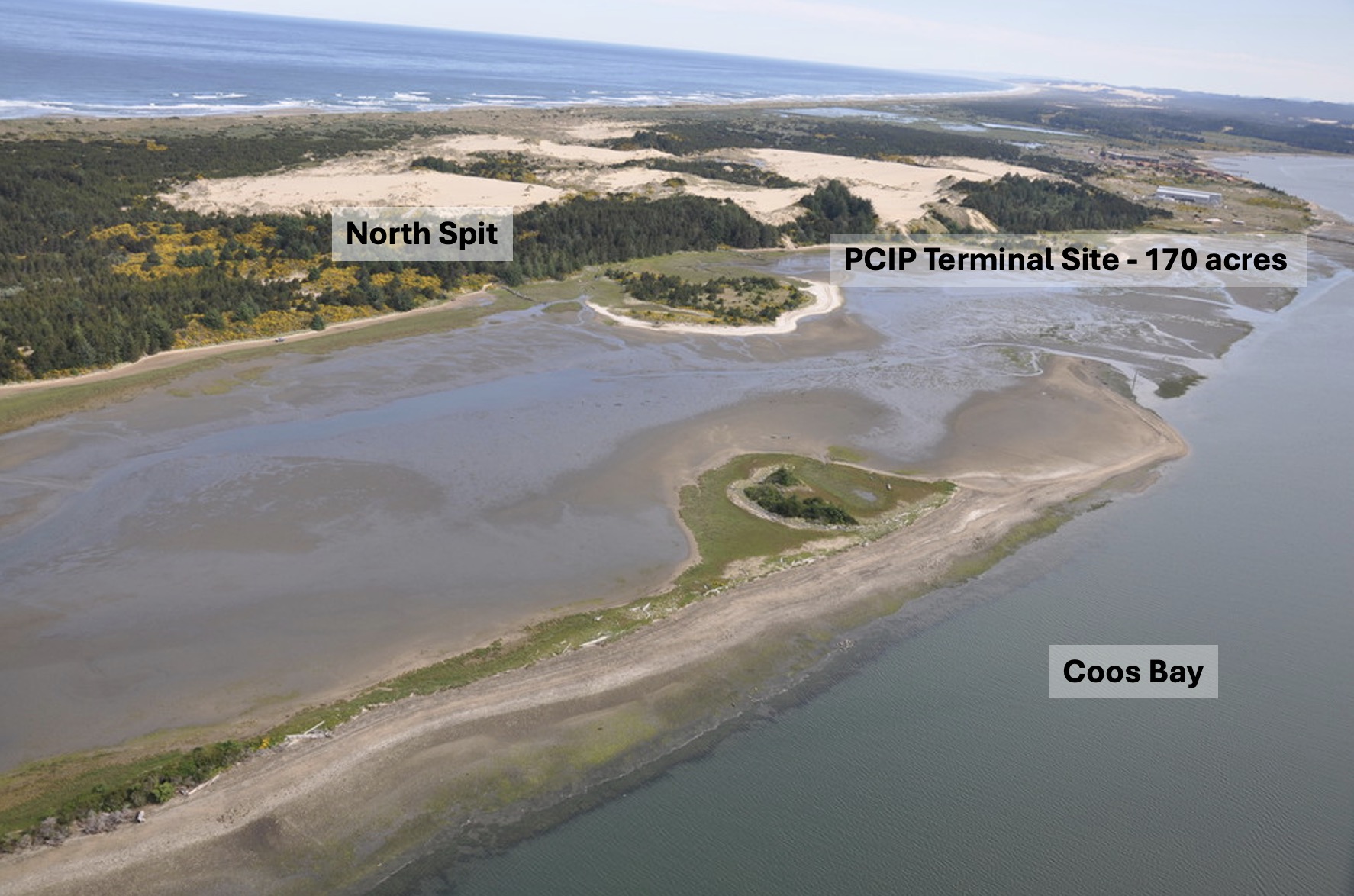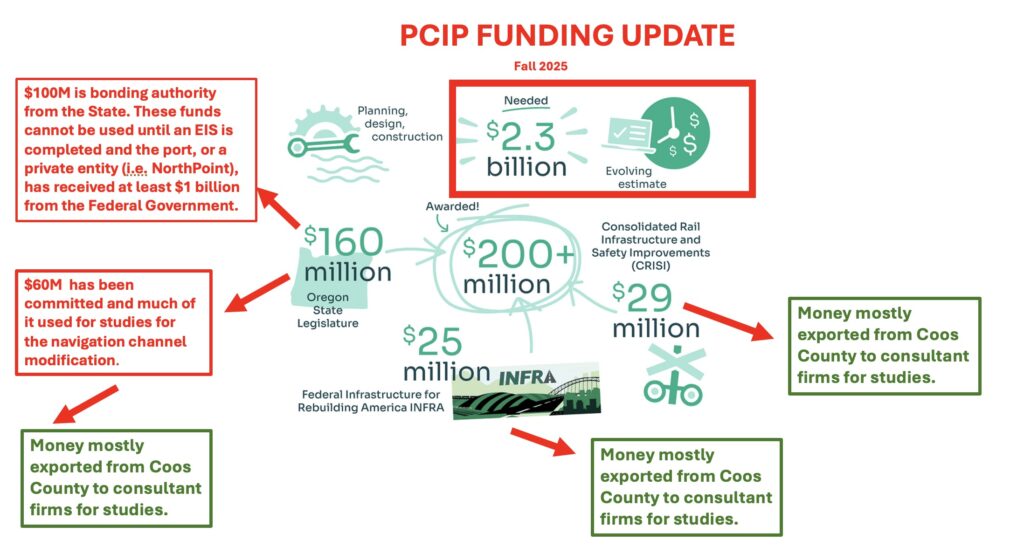


The Port of Coos Bay owns 170 acres of land on the North Spit where the shipping terminal is planned. It will be built by NorthPoint Development, a privately held commercial real estate operating company that specializes in industrial, data-centers and multi-family properties. The port awarded a 75-year property lease to NorthPoint Development, a company with no experience in the shipping terminal business.
As part of the permit for the channel expansion the port has prepared an economic study outlining the purported project benefits. It requires that the PCIP “steals” 10% of container shipping business from current west coast ports. The study interestingly compares the economic costs of shipping goods to and from Asia via the PCIP with east coast ports where ships must go through the Panama canal. Since submitting the study many of the west and east coast ports have made substantial upgrades making many of the study conclusions invalid.
The economic study used to support the channel modification is on the Port’s web site.
An update to this study is being prepared by Rebel Consulting and is estimated to be available in spring 2026.

How much will it cost and who will pay?
Estimates vary. State and Federal funds will be needed and NorthPoint Development says it will contribute but has not publicly disclosed the amount . The Port of Coos Bay’s total buildout cost estimate is approximately $2.3 billion. The estimate submitted by the Port in their permit request to the US Army Corps of Engineers is $4.36 billion. As of summer 2025 the Port has received several State and Federal appropriations to plan the PCIP amounting to over $100 million. Oregon’s Federal Senators Wyden and Merkley, and Representative Val Hoyle, who characterizes Coos Bay as, ”the Appalachia of Oregon”, all are very supportive of the PCIP project because of the jobs prospect. There is also considerable Sate support of the project. In the 2025 legislative session $100 million of additional bonding authority was provided for the project to support dredging. Representative Kevin Mannix, a Salem Republican, amongst many others, has been very supportive of the project.
The Port failed to obtain full funding for the PCIP in the Biden administration’s generous 2023 and 2024 funding cycles as the Port was deemed to not have sufficient legal, financial and technical capacity to carry out the project, and the project was not cost effective.
| Item | Cost |
|---|---|
| Design & Permitting Year-1 | $70,722,000 |
| Design & Permitting Year-2 | $30,000,000 |
| Rail Segment 1 | $274,796,000 |
| Rail Segment 2 | $1,019,922,000 |
| Container Terminal | $1,254,025,000 |
| Eugene Railyard | $104,489,000 |
| Navigation Channel | $551,368,000 |
| Sub-Total | $3,305,322,000 |
| Interest During Construction | $182,731,000 |
| Sub-Total | $3,488,053,000 |
| Contingency (25%) | $872,013,000 |
| Total Costs | $4,360,066,000 |
Note: IDC calculated at the FY24 federal discount rate of 2.75%
Current funding for the PCIP
STATE FUNDS
$160 million to be used to provide information to the USACE for permits required to expand the navigation channel (Link to ACE info ) and as a state pledge towards the $550 million estimate for dredging costs for the work.
FEDERAL FUNDS
$25 million from the Infrastructure for Rebuilding America (INFRA) Grant Program for design and pre-construction work for the terminal
$29 million from the Consolidated Rail Infrastructure and Safety Improvements (CRISI) Program for upgrades on the rail line
